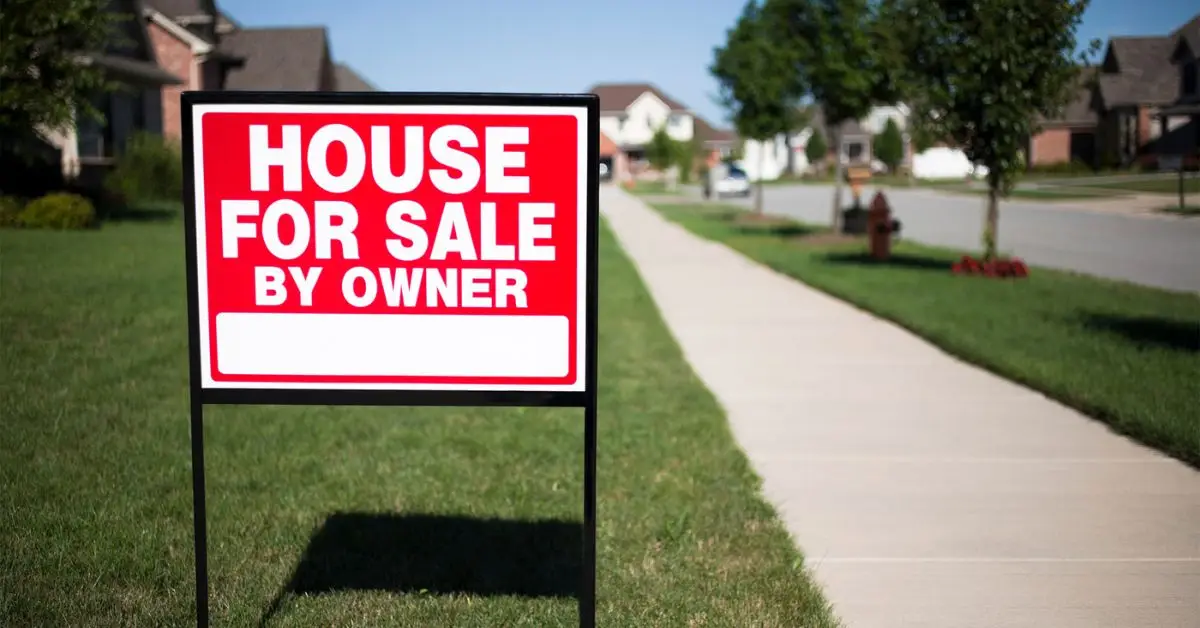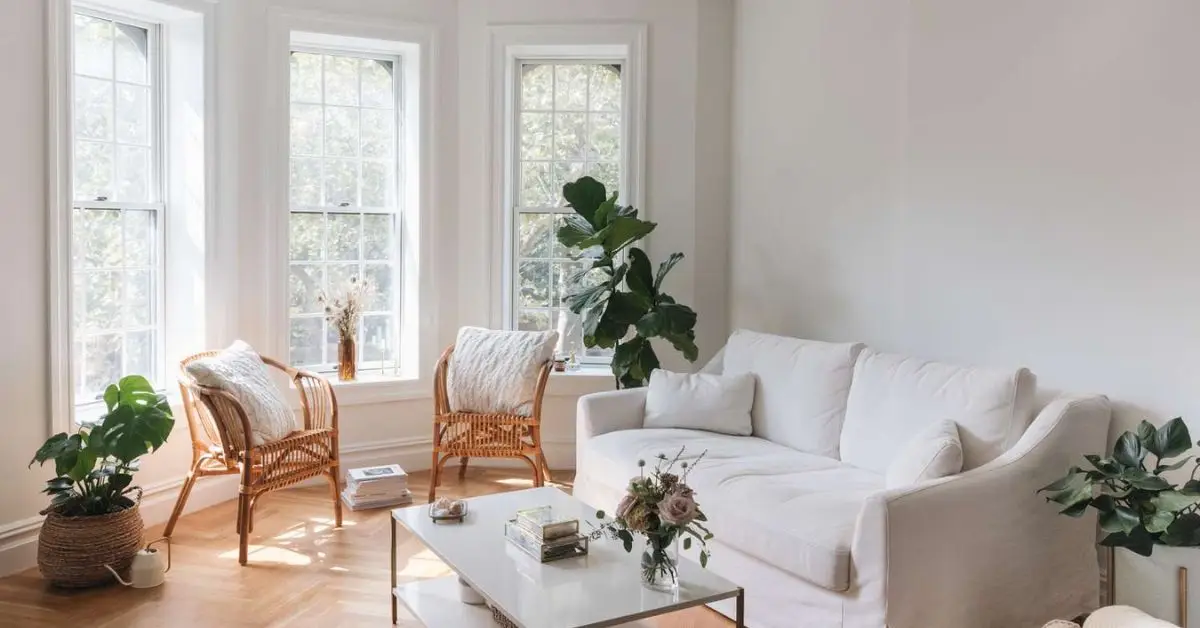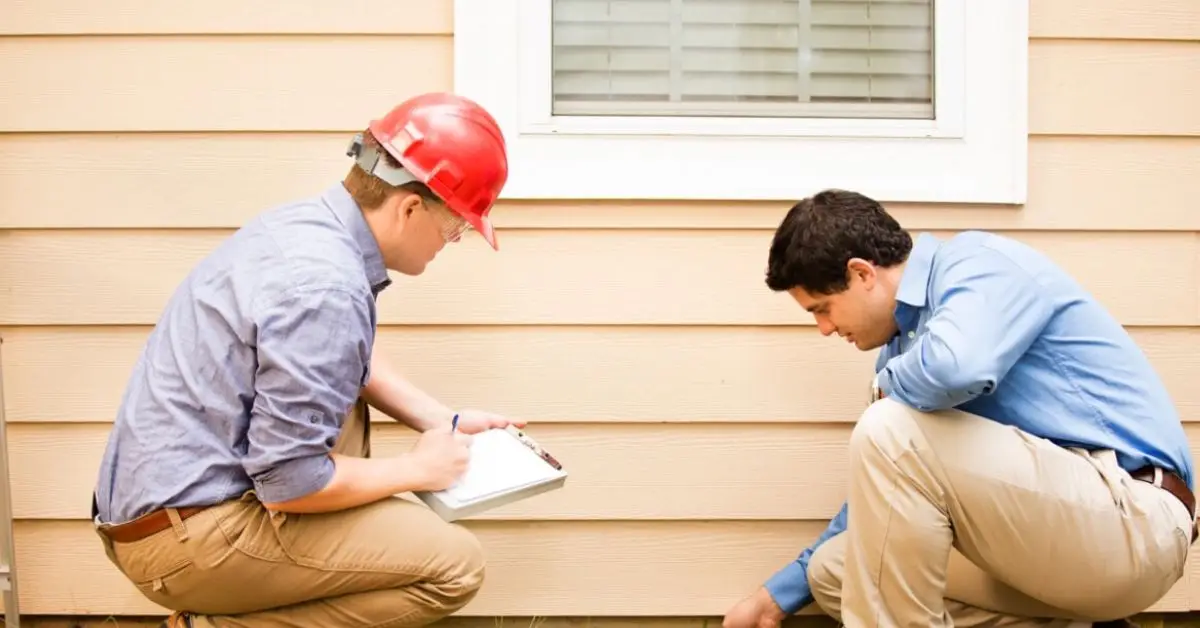11 Expert Strategies to Sell Your First Home Like You’ve Done It Before
Before you start cleaning out closets or thinking about listing photos, step back and ask yourself one question: Why are you selling?
This might seem obvious, but your motivation shapes every decision that follows—how fast you need to move, how you price your home, even how emotionally attached you might still be. If you’re relocating for work, your timeline will be tighter. If you’re upsizing or downsizing, your strategy might depend on whether you’ve already found your next place.
Now let’s talk timing. Homes listed in spring and early summer tend to sell faster and for slightly more money. But don’t let that box you in. The right preparation and pricing can make any season work.
What matters more is being intentional. Rushed listings often lead to longer time on market and lower offers. On the flip side, if you take too long and the market shifts, you could miss your window.
What to do now:
- Get clear on your “why.” Write it down.
- Set a realistic target listing date based on your goals—not just the calendar.
- Look at local sales data for homes like yours. Are they moving fast? Sitting for weeks?
When you know why you’re selling and when you want to move, the rest of the process becomes a lot less overwhelming.
Have you already set a timeline, or are you still figuring that out?
1. Understand Your Motivation & Set a Smart Timeline
Before you start cleaning out closets or thinking about listing photos, step back and ask yourself one question: Why are you selling?
This might seem obvious, but your motivation shapes every decision that follows—how fast you need to move, how you price your home, even how emotionally attached you might still be. If you’re relocating for work, your timeline will be tighter. If you’re upsizing or downsizing, your strategy might depend on whether you’ve already found your next place.
Now let’s talk timing. Homes listed in spring and early summer tend to sell faster and for slightly more money. But don’t let that box you in. The right preparation and pricing can make any season work.
What matters more is being intentional. Rushed listings often lead to longer time on market and lower offers. On the flip side, if you take too long and the market shifts, you could miss your window.
What to do now:
- Get clear on your “why.” Write it down.
- Set a realistic target listing date based on your goals—not just the calendar.
- Look at local market trends for homes like yours. Are they moving fast? Sitting for weeks?
When you know why you’re selling and when you want to move, the rest of the process becomes a lot less overwhelming.
Also, keep in mind these common home selling mistakes that many first-timers regret later. Have you already set a timeline, or are you still figuring that out
2. Choose the Right Representation: Agent vs. FSBO
Let’s be honest—selling a home isn’t rocket science, but it’s not exactly beginner-friendly either. You’re juggling legal paperwork, pricing strategy, negotiations, inspections, and buyers who ghost after making an offer.
That’s why the first major decision you’ll face is this: Should you hire a real estate agent or sell your home yourself (FSBO)?

If you go the FSBO route, you might save 5–6% on commission. But here’s the tradeoff—homes sold by agents sell for more money, and typically faster. Plus, agents handle marketing, showings, negotiations, and paperwork—especially helpful if you’re working full time or don’t have experience with contracts.
On the other hand, if you’re confident, have time, and live in a hot market, FSBO could make sense. Just be ready to handle:
- Pricing your home accurately using comps
- Scheduling and managing showings
- Preparing contracts and disclosures legally
- Negotiating directly with buyers and agents
Whether you choose an agent or go solo, don’t skip the research. Interview at least three agents if you’re hiring. Ask about their local experience, marketing strategy, and how they handle pricing. And if you’re selling yourself, study your local laws—one mistake on a disclosure or missed contract clause can cost you big.
Have you already decided which route you’re taking, or are you still comparing the pros and cons?
3. Price It Right with Data, Not Emotion
This is where most first-time sellers mess up. You look at what you paid, the renovations you made, maybe how much you love your kitchen—and let that shape your asking price.
But the market doesn’t care how much you think your home is worth. It only cares what buyers are willing to pay.
Homes that are priced correctly from day one tend to sell faster and for more money than those that start high and drop later. Overpricing often backfires—your listing goes stale, you lose negotiation leverage, and you may end up with a lower final offer than if you had priced right to begin with.
Instead of guessing, here’s what actually works:
- Get a CMA (Comparative Market Analysis) from your agent—or pull comps using public records if you’re FSBO. Focus on recent, local, similar homes.
- Use a Broker Price Opinion (BPO) if you want a second layer of pricing insight without a full appraisal. Here’s a breakdown on how BPOs work.
- Don’t leave “buffer room” for negotiation. Serious buyers know the comps—they’ll just move on.
One more thing: be prepared for the market to respond. If showings are slow in the first 10 days, or feedback consistently points to price, adjust quickly. Don’t wait until your listing is buried under newer, better-priced homes.
Smart pricing isn’t emotional—it’s strategic. If you want a bidding war, you have to invite one with the right number.
Are you planning to price based on comps, a professional opinion, or your gut instinct?
4. Smart Prep: Clean, Declutter & Stage Strategically
Buyers don’t buy homes—they buy what they imagine their life will look like inside them. And your job, before you list, is to make that vision effortless.
That starts with cleaning. Not a basic wipe-down—deep cleaning. Every corner, cabinet, baseboard, vent. If you wouldn’t want a guest to see it, a buyer definitely shouldn’t.

Then comes decluttering. Experienced sellers consistently say: remove at least 50% of your belongings before listing. The less stuff in the room, the bigger it feels. And no, buyers aren’t impressed by your book collection or your kid’s trophies.
Now let’s talk staging. You don’t have to hire a designer or rent fancy furniture. A few small changes—neutral colors, clean lines, fresh bedding, open windows—can go a long way.
A few small changes—neutral colors, clean lines, fresh bedding, open windows—can go a long way.
Consider these budget-friendly home upgrades to boost appeal without spending much.
Want to go further? Home staging can boost sale price by 5–10% and cut time on market in half. For vacant properties, virtual staging is a budget-friendly option.
Here’s what matters most:
- Declutter like a minimalist (less is more)
- Neutralize your home—remove personal items and bold decor
- Highlight natural light and flow
- Boost curb appeal (buyers often decide before they step inside)
Buyers want to picture their life in the space—not feel like they’re touring someone else’s.
Have you already started staging, or are you still trying to figure out where to begin?
5. Boost Online Appeal: Photos, Tours, Listings
Most buyers will see your home for the first time on a screen—not in person. And if the photos don’t grab them in the first few seconds, they’ll scroll right past your listing without a second thought.
High-quality photos are one of the top reasons homes get more clicks, more showings, and stronger offers. Yet many sellers still upload dark, blurry phone pics or skip professional photography altogether.
Here’s what works:
- Hire a pro photographer who specializes in real estate (not weddings or portraits). It’s worth every penny.
- Schedule photos at the right time of day—usually late morning or golden hour—to show off natural light.
- Declutter before the shoot. The camera catches everything.
If you want to stand out even more, add a 3D tour or virtual walkthrough. Listings with virtual tours see 49% more engagement and can even command higher offers—especially from out-of-town or busy buyers who shop remotely.
And don’t just post your home on one site. Make sure it’s syndicated to:
- MLS (via your agent or FSBO platform)
- Zillow, Realtor.com, Redfin
- Local Facebook groups, neighborhood apps, and even Instagram stories if you’re comfortable
Online is your curb appeal now. If buyers don’t stop scrolling, they’ll never schedule a showing.
Have you seen any online listings lately that made you pause—and what made them work?
6. Be Show-Ready: Flexible and Welcoming
Here’s the truth no one tells you: most offers don’t fall apart because of price—they fall apart because the buyer never felt a real connection to the home. And sometimes, that’s because they couldn’t even get in to see it.
Being show-ready isn’t just about cleaning your home once and hoping for the best. It means keeping it in near-perfect shape every day it’s on the market, and being as flexible as possible with showings.
Sellers who allow same-day and evening showings get more foot traffic—and more offers—than those with limited availability. Every time you say no to a showing, you might be saying no to your best buyer.
Here’s how to stay prepared:
- Leave the house spotless before work each day
- Keep lights on, blinds open, and counters clear
- Store clutter in bins you can quickly hide
- Be ready to leave the house on short notice
On a Reddit thread in r/RealEstate, one first-time seller said, “We allowed every showing. Even at night. No excuses. It made a difference.” Others echoed that being too restrictive cost them momentum in the first critical days.
If possible, stay somewhere else for a few days after listing. It’s inconvenient—but it can lead to faster offers and fewer disruptions.
Buyers decide fast. And if your home is hard to see—or looks half-lived-in when they do—they’ll move on without ever telling you why.
What’s your plan for showings? Are you living in the home while selling, or thinking about moving out early?
7. Tackle Pre-Inspection & Repairs Smartly
One of the most stressful parts of selling is the buyer’s inspection. That’s when surprises surface, negotiations get tense, and deals start to wobble. But it doesn’t have to catch you off guard.
If you’re serious about selling smoothly, consider doing a pre-listing home inspection. This helps you uncover and fix issues before buyers use them against you—or worse, walk away.

You don’t need to renovate everything. Focus on what matters:
- Safety and code issues (electrical, leaks, roofing)
- Visible cosmetic damage (cracked tiles, peeling paint)
- Small, cheap fixes that make a big difference—like replacing worn doorknobs or fixing a leaky faucet
And when something shows up that’s too expensive to fix? Be transparent. Disclose it early and decide whether to offer a repair credit or adjust your price. Buyers appreciate honesty, and it gives you back control.
Bankrate’s seller tips also suggest not over-improving. Installing a brand-new kitchen to impress buyers doesn’t guarantee you’ll get that money back. In most cases, you won’t. Small updates with a high visual payoff work better.
Getting ahead of repairs means fewer delays, fewer renegotiations, and more trust from buyers.
Have you thought about doing a pre-inspection—or are you planning to wait for the buyer’s?
8. Market & Negotiate Offers Like a Pro
Listing your home is one thing. Getting offers—and knowing how to respond—is another. This is where smart sellers stand out.
Let’s start with marketing. If you’re working with an agent, ask exactly how they plan to promote your home. If you’re going solo, make sure you’re hitting more than just Zillow. Social proof matters. That means sharing your listing in local Facebook groups, neighborhood forums like Nextdoor, and even Instagram stories—especially if you have a photogenic space.
Then comes the offers. Don’t just jump at the highest number.
- Offer price
- Contingencies (inspection, appraisal, financing)
- Closing timeline
- Buyer’s financial strength (pre-approval is a must)
Also—don’t fall for pressure tactics. A recent News.com.au report exposed the shady tactic of using fake offers to create urgency. If a buyer’s agent claims there’s another offer but won’t provide proof, stay calm. You’re allowed to ask questions and take your time.
When you get multiple offers, don’t rush to accept one that looks best on paper. Often, the strongest offer is the cleanest, not the biggest. A slightly lower bid with no contingencies and a quick close may be the smarter play.
The best negotiators don’t react—they plan, they stay calm, and they never let emotion lead the process.
Are you hoping for a fast sale—or are you willing to wait for the right offer, even if it takes longer?
9. Understand Closing Costs & Legal Steps
It’s easy to focus on the sale price and forget what’s coming out of it. But if you don’t understand your closing costs upfront, the final check you walk away with might be a lot smaller than you expect.
Most sellers pay 6%–10% of the home’s sale price in total costs—depending on your state, agent commission, taxes, and fees.
Here’s what’s typically deducted from your final sale proceeds:
- Real estate agent commission (5–6% split between buyer and seller agents)
- Title insurance
- Transfer taxes and recording fees
- Escrow and attorney fees (varies by state)
- Any unpaid property taxes, HOA dues, or mortgage payoff amounts
In some states, hiring a real estate attorney is required. In others, it’s optional but smart—especially if you’re selling FSBO. They can review your contract, protect you during negotiations, and handle legal documents at closing.
Also, consider using a net sheet calculator (your agent can provide this) to see exactly how much you’ll keep after everything is paid. That way, there are no last-minute surprises.
Selling your home is a financial move, not just an emotional one. Knowing the legal and financial side keeps you in control.
Have you factored in your closing costs yet—or are you still trying to figure out what your net profit will be?
10. After-Sale Strategy & Moving Checklist
Once your home is under contract, it might feel like the hard part is over—but there’s still plenty to do. And if you don’t plan ahead, closing week can turn into a scramble of boxes, paperwork, and last-minute panic.
Start by aligning your move-out date with your closing date—but build in a buffer if you can.
Here’s what to tackle early:
- Book movers (or rent a truck) at least 2–3 weeks ahead
- Gather moving boxes, labels, and packing supplies
- Start packing room by room—label everything clearly
- Forward your mail and update utilities
- Cancel or transfer internet, trash pickup, and home insurance
It’s also a good idea to create a “closing folder” with all your documents—inspection reports, warranties, final utility bills, and a copy of the purchase contract. Keep it handy, just in case the buyer or title company needs anything last-minute.
And don’t forget about small details: keys, garage remotes, appliance manuals. Leaving your home clean, clear, and ready for the new owner isn’t just courteous—it can protect you from disputes later.
This part may feel thankless, but it’s your final impression. Leave things better than you found them, and move forward without loose ends.
Have you started packing yet—or are you waiting until the sale is finalized?
11. Pandemic-Era Sellers & Evolving Buyer Demand
If you bought your home during the pandemic, you’re not alone. Millions of first-time buyers entered the market between 2020 and 2022—chasing low interest rates, more space, and remote work flexibility.
Now, many of those same buyers are turning into first-time sellers. But here’s the catch: the market has changed. And the kind of home buyers wanted in 2021 might not be what they’re after now.
Today’s buyers are also more cautious. With higher mortgage rates, inflation, and tighter budgets, they want value, not just square footage. They’re looking closely at energy efficiency, maintenance costs, and community amenities—not just flashy upgrades.
So if your home was bought in a seller’s market frenzy, it’s worth rethinking how you position it now:
- Highlight timeless, practical features—not just trendy finishes
- Be realistic about price vs. pandemic appreciation
- Address concerns about insulation, HVAC, or long-term upkeep up front
Selling a home you bought only 2–3 years ago can feel like backtracking—but it doesn’t have to be. With the right strategy and expectations, you can still move forward with confidence.
Did you buy during the COVID boom—and are you seeing a different kind of buyer now?
Final Thoughts: Selling Smart the First Time Around
Selling your first home is emotional. It’s part financial, part logistical—and completely personal. No checklist or blog can tell you exactly what’s right for your situation, but the tips above should give you a serious head start.
From prepping your space and pricing smart, to staying flexible and understanding the legal fine print—it all adds up to one thing: control. You don’t need to know everything. But you do need to know what questions to ask, who to trust, and what buyers actually care about.
And if you’ve made it this far, you’re already ahead of most first-time sellers.
I’d love to hear from you—what’s been the most surprising (or stressful) part of the process for you so far?
For more helpful guides and real estate insights, visit Build Like New.
Disclaimer: This article is based on expert insights, industry data, and personal experiences. It’s intended to guide and inform, not replace professional advice. Always consult a licensed real estate agent, attorney, or financial advisor for decisions related to your specific situation.


